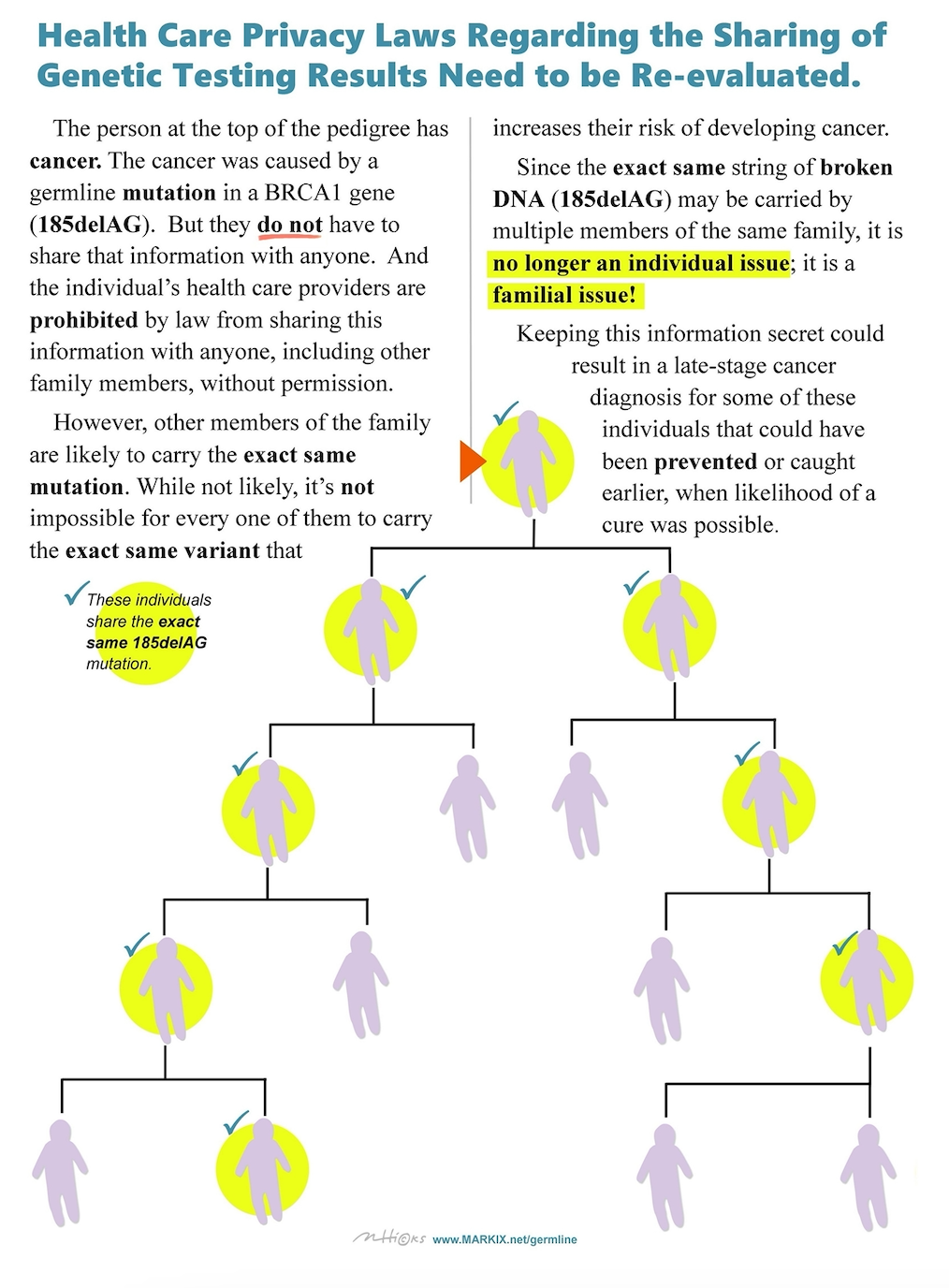Article
Six Degrees of Separation for Cancer Genetics
Author(s):
In my wife’s family, the same pathogenic BRCA2 mutation is shared among 1st, 2nd, 3rd, 4th, 5th and possibly 6th degree (too young to test) blood relatives.

It happened again; I got another direct message after posting one of my hereditary cancer awareness graphics on social media. It was from someone knowing someone not wanting to share a positive genetic mutation test result with the rest of their family. A positive result that not only puts the person tested at a higher risk of cancer, but possibly several other blood relatives. Sadly, getting these types of messages happens too frequently.
I could really sense the frustration of the person sending the message. These messages are also angering and heartbreaking for me. I’m only writing this now because someone in my late wife’s family did not openly and honestly share their positive BRCA2 mutation test result with all at-risk family members.
When I first started getting messages like this, I was unsure how to respond. But I’ve slowly put together some resources that might be helpful for those trying to convince another person to share genetic information.
I learned how to be a cancer advocate “on-the-fly” and out of desperation after my wife was diagnosed with advanced-stage triple-negative breast cancer caused by her inherited BRCA2 mutation. And, at the same time, I began advocating for my adult previvordaughter because she inherited the same mutation.
Following my wife’s death, I continued to advocate for my child as she faced her first of three cancer-risk-reducing preventative surgeries just weeks after she lost her beloved mother. Later, to help me deal with my intense grief, I expanded my advocacy and started writing stories and creating graphics about hereditary cancer in an effort to try and help others avoid the horrible nightmare of a cancer not prevented.
But I so wish I was doing advocacy work highlighting the importance of sharing genetic information from a different perspective. One supporting two previvors in my life. Not as THAT widowed spouse and solo parent with the unbearably distressing narrative about what can go horribly wrong when information is not shared.

The artwork that prompted the latest message I received illustrated how privacy laws regarding the sharing of genetic testing results need to be re-evaluated. I was trying to make the point in the graphic that when someone tests positive for a germline mutation that puts them at risk of cancer, it’s more than an individual issue; it’s really a familial issue, and it should be treated as such. With anything found to pose a serious health threat being shared with all relatives at risk.
I loosely based the graphic on my late wife’s family cancer pedigree. In her family, the same pathogenic BRCA2 mutation is shared among 1st, 2nd, 3rd, 4th, 5th and possibly 6th degree (too young to test) blood relatives. Up to six degrees of separation with the exact same broken gene! That’s a higher degree of separation than I illustrated on the graphic.
Hopefully the cycle of cancer has been broken in my late wife’s family at six degrees of separation now that knowledge about mutation has been openly shared. But it’s heartbreaking to think it took me becoming her advocate and digging into my wife’s family’s devastating cancer history after her diagnosis to get what could have been life-saving genetic data shared.
I'm hoping the person can be convinced to share their genetic test results with their family. They already share genes with their relatives, why not openly share something with them that might help prevent a life-threatening illness?
Our genome does not separate us from our relatives as much as we may think. Our genes make us who we are as individuals, but they also undeniably connect us to the lives of our family as well.
For more news on cancer updates, research and education, don’t forget to subscribe to CURE®’s newsletters here.



